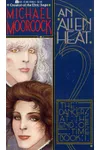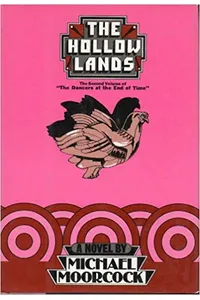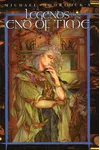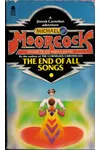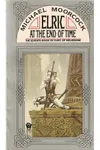Step into the dazzling, decadent world of Michael Moorcock’s Dancers at the End of Time, a science fiction series where immortal hedonists throw lavish parties as the universe collapses! This vibrant trilogy, blending humor, romance, and philosophical depth, follows Jherek Carnelian, a carefree denizen of the End of Time, as he chases love across millennia, defying the laws of time and morality.
Set in a far-future Earth where entropy reigns, the series captivates with its whimsical prose and satirical nod to Victorian decadence. If you crave a sci-fi adventure that’s as playful as it is profound, Dancers at the End of Time is your ticket to a cosmic romp.
How Dancers at the End of Time Began
Michael Moorcock, a titan of science fiction and fantasy, penned Dancers at the End of Time in the 1970s, inspired by the fin de siècle decadence of Oscar Wilde and Aubrey Beardsley. Tired of the dark, brooding tone of his earlier works like the Elric Saga, Moorcock crafted a lighter, satirical series that lampoons romance, morality, and English literary traditions. The trilogy emerged during a period when Moorcock slowed his prolific pace to focus on polished prose, resulting in a playful yet poignant masterpiece.
The Heart of Dancers at the End of Time
The core trilogy comprises An Alien Heat (1972), The Hollow Lands (1974), and The End of All Songs (1976). In An Alien Heat, Jherek Carnelian, a naive immortal, falls for Mrs. Amelia Underwood, a prim Victorian time-traveler repulsed by the End of Time’s debauchery. Their unlikely romance drives the series, with Jherek’s bumbling pursuit taking him to 19th-century London. The Hollow Lands sees Jherek navigating Victorian England and cosmic chaos to reunite with Amelia, while The End of All Songs resolves their love story amid universe-altering revelations.
The series shines through its vivid setting—a decaying Earth where immortals wield power rings to reshape reality—and its themes of love, identity, and morality. Moorcock’s prose drips with Wildean wit, blending steampunk, fantasy, and sci-fi in a psychedelic tapestry. The clash between Amelia’s Victorian values and the End of Time’s amorality sparks humor and introspection, making the series both a comedy of manners and a meditation on human nature.
Why Dancers at the End of Time Resonates
Dancers at the End of Time has left a lasting mark on science fiction, praised for its bold imagination and satirical edge. Fans adore its quirky characters, like the flamboyant Sweet Orb Mace, and its ability to balance levity with existential questions. Though not Moorcock’s most famous work, it’s a cult favorite, influencing writers with its genre-blending audacity. Its exploration of innocence and morality continues to captivate readers seeking sci-fi that dares to be different.
- About Dancers at the End of Time
- Publication Years: 1972–1976
- Number of Books: 3 core novels, plus short stories
- Genres: Science Fiction, Fantasy, Steampunk
- Award: The Hollow Lands won the August Derleth Award (1974)
Ready to dance through a collapsing universe? Grab An Alien Heat and dive into the whimsical, heartfelt world of Dancers at the End of Time!
